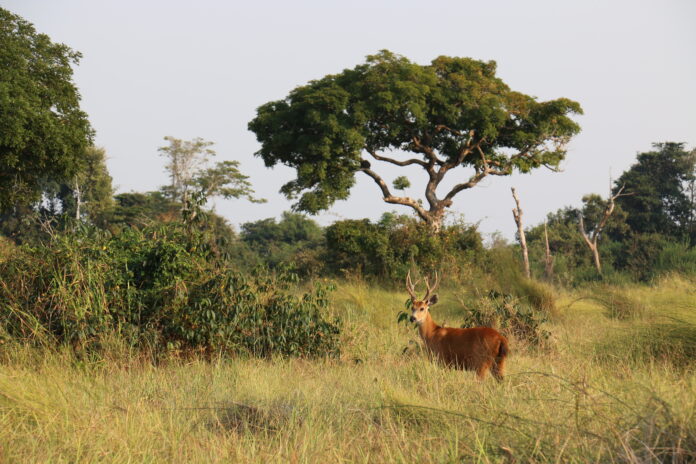A combination of disruptive ecosystem factors could lead to savannization
By LILLY ACKERMAN — science@theaggie.org
A new study from UC Davis has found that deforestation and climate change in the Amazon Rainforest will have negative effects on a large portion of the region’s terrestrial mammal species.
According to the study, ecosystem disruption in the Amazon will lead to increased savannization along its southern and eastern borders in the future. Savannization refers to the conversion of forest habitats into open plains.
“In the largest tropical forest on Earth, the Amazon, rising temperatures and lengthening of droughts alone could jeopardize ecosystem integrity and lead to expansion of tropical savannahs,” the study reads.
Daniel Rocha, the lead author of the study who researched this phenomenon while getting his Ph.D. at UC Davis, explained why habitats that are converted from forest to “cerrado,” or savannah, through savannization are less able to support life than natural plains.
“These open habitats will resemble cerrado areas, but without the associated biodiversity, because it is the result of a forest degradation process,” Rocha said via email. “Deforestation, uncontrolled fires, selective logging and other direct forest degradation factors act in synergy with climate change and accelerate the ‘savannization’ of Amazon forest.”
The study focused on savannization’s effects on medium to large terrestrial mammals, including peccaries, jaguars and pumas, in the southern Amazon. Some of the mammals studied are generalists, meaning they could live in forest or savannah habitats, while others are exclusively forest- or savannah-dwelling species.
The authors used camera trap surveys to assess the mammals’ habitat and to determine how each species responded to nearby savannah habitats.
Rocha found that savannization and deforestation were expected to impact forest-dwelling mammals. However, somewhat unexpectedly, analysis of the generalist species also showed an impact.
“Surprisingly, most habitat generalist species (i.e., able to use both forest and cerrado) prefer to use forested areas when they have both habitats available,” Rocha said. “This indicates that to some extent they will also be affected by future ‘savannization’ in the Amazon.”
This finding contributed to the conclusion that the majority of the southern Amazon’s mammals are expected to be negatively impacted by savannization. The only species that showed a neutral or positive response to savannization were those that already exclusively inhabiting savannah habitats.
“Some cerrado-specialist mammals will probably benefit from [savannization], like the pampas deer,” Rocha said. “But overall, forest associated and generalist species will be exposed to non-preferable habitat, which can lead to lower survival rates, smaller population sizes and reduction in species distribution range.”
The results of this study reveal a critical risk for the mammals of the Amazon rainforest, the largest biome in Brazil and an important part of the global ecosystem. Combinations of climate change and human-induced deforestation make conservation a more challenging issue for the southern Brazilian Amazon, according to the study.
“If climate-driven savannization causes many of these species to lose access to preferred habitat, this will reduce the ability of protected areas to safeguard wildlife populations,” Rocha said. “The results of this study suggest that these potential effects should be considered when assessing potential climate change effects on these species.”
Written by: Lilly Ackerman — science@theaggie.org





